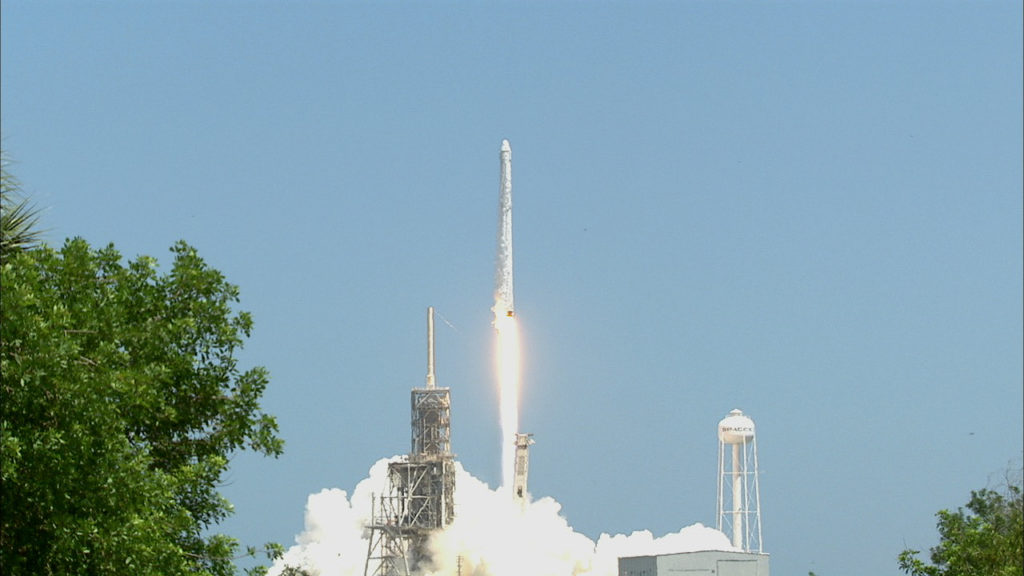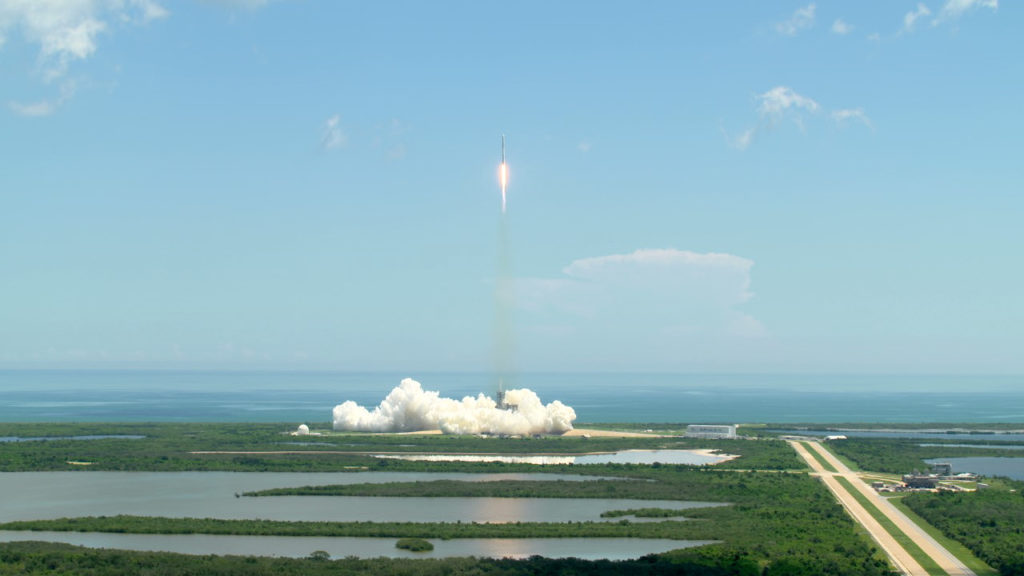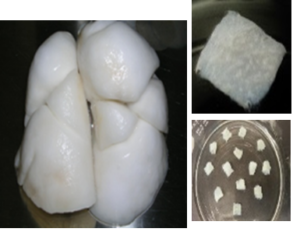Image credits: NASA TV
Picture-perfect Launch
Main Engine Cutoff; Second Stage Burn Begins
The Falcon 9 rocket’s first-stage engines have finished their burn and separated from the vehicle. As the second stage continues the flight, the first stage will aim for a landing at Cape Canaveral Air Force Station.
Liftoff! SpaceX CRS-12 is Underway
T-0, ignition and liftoff of the SpaceX Falcon 9 rocket and Dragon spacecraft, setting off on the company’s 12th mission to deliver supplies, equipment and science materials to the International Space Station.
Three Minutes Until Launch
T-minus three minutes and counting. The gantry-like strongback support structure has been lowered away from the rocket. Weather is “go.”
The terminal countdown begins at T-30 seconds.
10 Minutes Until Launch

The countdown continues toward liftoff at 12:31 p.m. EDT, 10 minutes from now. During this time, the Falcon 9’s engines will be chilled to condition them for launch, the strongback support structure will be moved away from the rocket, the flight computer will run its prelaunch checks and the rocket’s propellant tanks will be brought to flight pressure. Finally, SpaceX Launch Director Mike Taylor will verify “go for launch.”
What’s on Board?
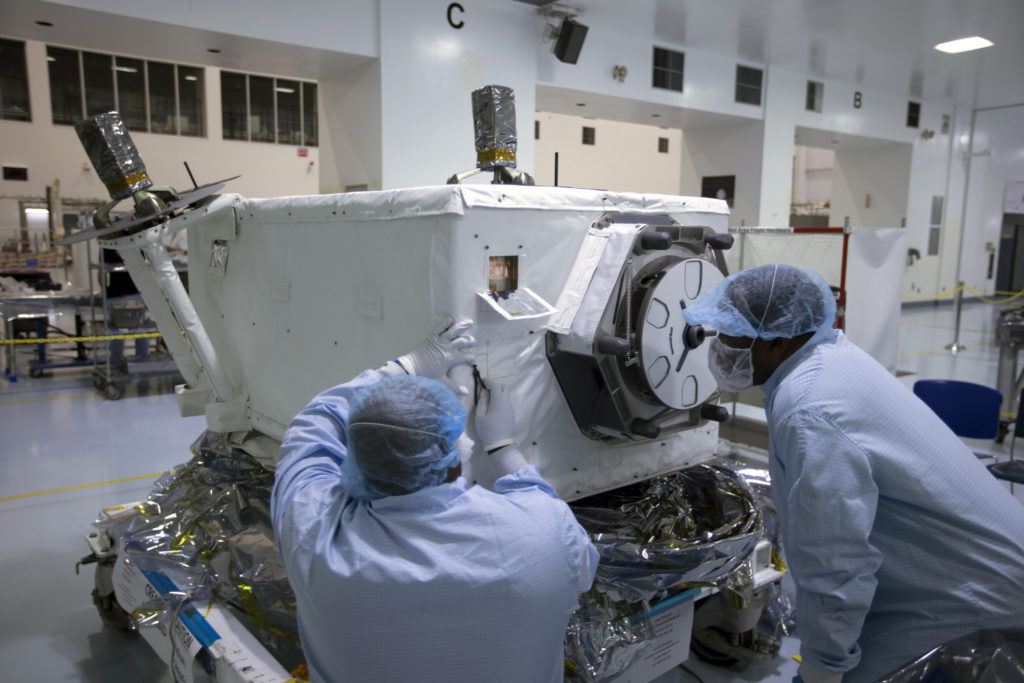
The SpaceX CRS-12 mission aims to deliver more than 6,400 pounds of cargo to the International Space Station. In addition to supplies for the crew members living on the orbiting laboratory, the Dragon spacecraft is bringing computer resources, hardware and spacewalk equipment. No flight is complete without science, and the cargo includes materials to support the science and research projects Expeditions 52 and 53 will perform — approximately 250 investigations. Here are a few of the highlights:
Cosmic Ray Energetics and Mass (CREAM): From its vantage point on the station’s Japanese Experiment Module Exposed Facility, the CREAM instrument will spend three years measuring the charges of cosmic rays — information that could aid scientists in understanding the fundamental structure of the universe.
Crystallization of LRRK2 Under Microgravity Conditions (CASIS PCG 7): CASIS PCG 7 was developed by the Michael J Fox Foundation, Anatrace and Com-Pac International to take advantage of the microgravity environment in orbit to grow larger versions of LRRK2, a protein implicated in Parkinson’s disease.
Kestrel Eye (NanoRacks-KE IIM): This microsatellite carries an optical imaging system payload, including a commercially available telescope. Kestrel Eye is designed to help prove the concept that microsatellites can support critical operations and serve as viable payload platforms.
Effect of Microgravity on Stem Cell Mediated Recellularization (Lung Tissue): This experiment also leverages the microgravity environment — this time to test ways to grow new lung tissue. A specialized framework will allow scientists to observe the effect of gravity on different types of lung cells as they grow into new lung tissue.
Pictured at right: Human lung scaffold pieces can be made for use as a scaffold to support growth of bioengineered lung for research studies like lung tissue. Image courtesy of Joan Nichols.
Space Life and Physical Sciences Research and Applications: These experiments/payloads are developed to drive scientific and technological advances enabling both the expansion of human spaceflight and the enhancement of life on Earth.
Read more here.
Launch Coverage Begins
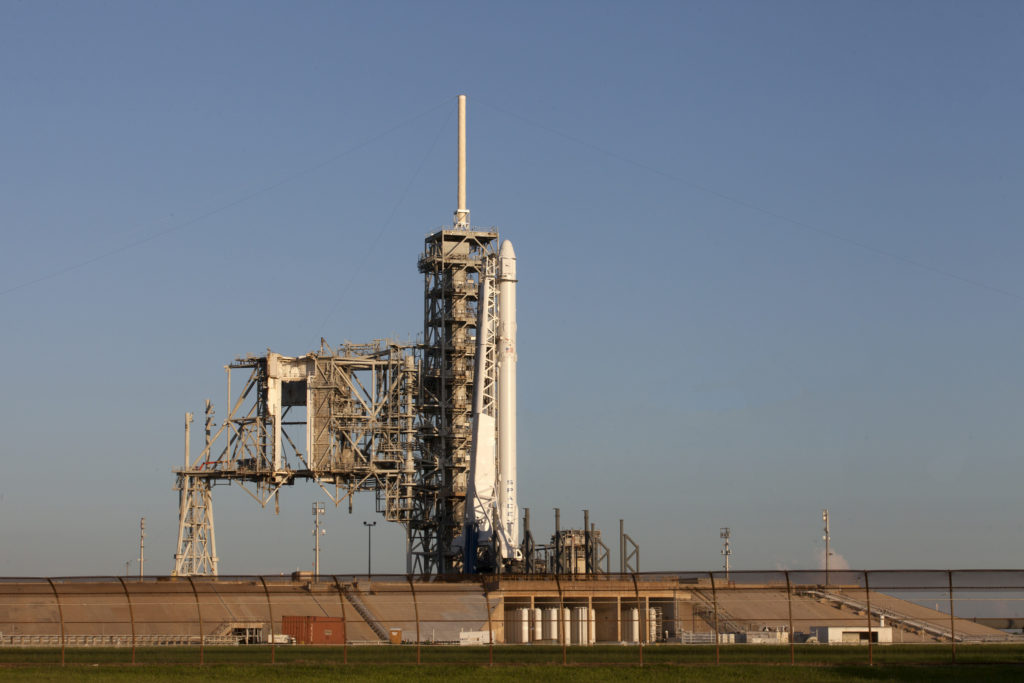
Good afternoon from Kennedy Space Center! At Launch Complex 39A, a SpaceX Falcon 9 rocket and Dragon spacecraft stand ready for liftoff in an instantaneous launch window at 12:31 p.m. EDT. Dragon’s internal countdown is running and propellant loading is underway.
It’s sunny and warm across Florida’s Space Coast. Launch Weather Officer Mike McAleenan with the U.S. Air Force 45th Weather Squadron is monitoring conditions in the launch area, but weather is not expected to pose a problem. The current weather prediction is 80 percent “go” at launch time.
Today’s launch is a cross-country effort. Launch controllers at the Florida spaceport are working in concert with teams at NASA’s Johnson Space Center in Houston and SpaceX’s control center in Hawthorne, California. The launch blog originates from the NASA News Center here at Kennedy, about three miles from the launch complex.
There’s more to come, so stay with us.
Launch Weather Prediction Upgraded to 80 Percent ‘Go’
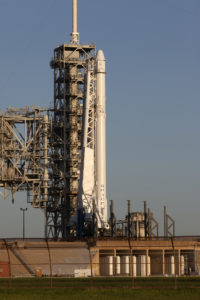 The latest launch weather forecast from the U.S. Air Force 45th Weather Squadron upgrades the chance of favorable conditions to 80 percent. That’s good news for launch managers and controllers as they continue with preparations for liftoff of the SpaceX Falcon 9 rocket and Dragon spacecraft on SpaceX CRS-12, the company’s 12th commercial resupply mission to the International Space Station. Launch remains on schedule for 12:31 p.m. EDT from Launch Complex 39A at NASA’s Kennedy Space Center in Florida.
The latest launch weather forecast from the U.S. Air Force 45th Weather Squadron upgrades the chance of favorable conditions to 80 percent. That’s good news for launch managers and controllers as they continue with preparations for liftoff of the SpaceX Falcon 9 rocket and Dragon spacecraft on SpaceX CRS-12, the company’s 12th commercial resupply mission to the International Space Station. Launch remains on schedule for 12:31 p.m. EDT from Launch Complex 39A at NASA’s Kennedy Space Center in Florida.
Join us at noon for updates from the countdown.
Photo credit: NASA/Kim Shiflett
SpaceX Falcon 9 on Track for Midday Liftoff
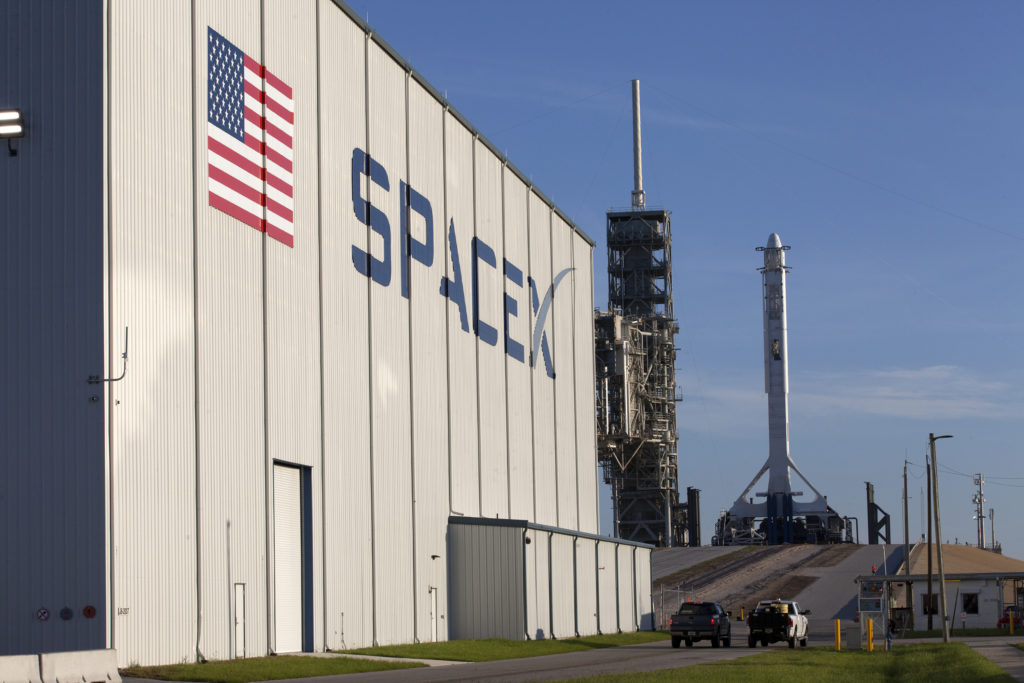
Countdown clocks are ticking this morning at NASA’s Kennedy Space Center in Florida, where a SpaceX Falcon 9 rocket awaits liftoff at 12:31 p.m. EDT from Launch Complex 39A. Atop the rocket is a SpaceX Dragon spacecraft packed with more than 6,400 pounds of science research, crew supplies and hardware bound for the International Space Station.
Be sure to join us at noon Eastern for frequent updates from the countdown.

